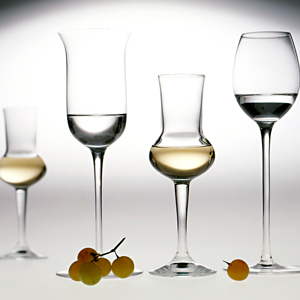First of all – what is grappa anyway? It’s an Italian spirit made from the squashed grape skins removed from a wine. Tiny amounts of alcohol remain in the skins and this is then distilled to make grappa – two products for the price of one (bargain!).
In France, these products are called ‘marc’ and are generally drunk in local bars, but the Italian name seems to have travelled with pizza and spag bol to become available everywhere – including SA. So much so, that as of last year, all grappas are now to be renamed as ‘Husk Spirit’, reserving grappa for solely Italian products.
The next big thing
We’ve had garagiste wine, artisan coffee, craft beers and I think everyone is expecting that the next big thing (actually, it’s probably happening already) will be handcrafted spirits. Some people such as Roger Jorgensen of Jorgensen’s Distillery and Primitiv Vodka have strayed away from the grape to produce gin, vodka and even absinthe. But most people are still sticking with grapes, producing some delicious spirits from tiny stills locked away in sheds and small buildings on their farms.
One such is Tanagra just outside McGregor in the Breede River Valley. German guest-farm owners, Robert and Anette Rosenbach, started distilling in 2009 using a still brought in from their home country. They make their own wine on the farm as well, so using the skins to make grappa was a logical conclusion.
“Also” says Robert “we can control how hard we press the skins – we like to press very gently and leave quite a bit of juice in there so that we don’t need to dilute before distilling.” As well as their own grapeskins, they also use some from Robertson’s most popular winery, Springfield. Abrie Bruwer is a fan of grappa and was happy to trade his grapeskins for a few bottles of the spirit so Robert makes one from the Life from Stone Sauvignon skins, showing distinctive green pepper notes with grass, typical of the wine and also the Wild Yeast Chardonnay skins as well.
But the really interesting spirit comes not from the skins, but the lees (dead yeast cells) of the Springfield Methode Ancienne Cabernet Sauvignon. When the wine is ‘racked’ (moved from one barrel to another leaving behind sediment and lees), Robert takes the alcoholic, yeasty lees and distils what he catchily calls ‘Eau de Vie de Lie’, ‘lie’ being the French word for lees. This has a delicious nose of caramel and meringues and is much smoother and richer on the palate than a normal grappa – a lovely end to a meal. Other spirits made by Tanagra include fruit Eaux de Vie made from apricots, peaches, quinces and lemons, all of which conjure up interesting ideas about sorbet, slurpies and delicious desserts.
If you want to go and try Robert’s grappas and marcs, he is open most days for tasting on the farm – make sure you try the wines as well whilst you’re there. I was lucky enough to stay over for 2 nights and was much amused to see Anette offering a tot of grappa with her huge, homemade and amazing German-style breakfast, but if that’s too early for you, then toddle along in the afternoon, sit under the giant wild fig tree and sip at your leisure as the sun goes down.
Tanagra Wine & Guest Farm – Prices start at R160 per half bottle.

